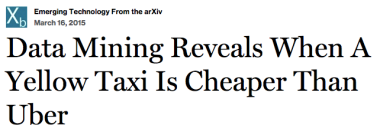There’s a lot in that blog title but such is the reach and potential of mesh networks. These are neighborhood-level, semi-guerrilla networks of wireless routers or nodes placed in a neighborhood to connect locals to the internet for free. They’re like a collection of free wifi hotspots which are not only connected to the internet, but also to each other to create a local network. This is where the mesh’s real power lives: in its ability to connect a community to itself. When the regular internet goes down, those on a local mesh network can still connect to and communicate with one another. One can easily see how this has the potential to create a deeper sense of community not only in internet space but also in physical space.
The Red Hook mesh (in Brooklyn, NY) illustrated this perfectly after Superstorm Sandy. The regular, wired internet was unreliable and often nonexistent, but those on the mesh were still able to communicate and coordinate locally. What’s especially interesting is how the mesh cut across socioeconomic boundaries in the area, connecting people in townhouses, apartments, and public housing projects alike. Aside from providing a necessary resource in a time of emergency, the mesh, at least in this case, accomplished something many city planners hope to achieve: a greater sense of community cohesion in a diverse neighborhood. (And at a low economic cost, at that – though it will require some funding to maintain, as all good things eventually do.)
The local focus of mesh networks was summarized in a New York Times piece from August 2014:
Joshua Breitbart, a senior fellow at New America Foundation’s Open Technology Institute, which created the software that helps the Red Hook mesh operate, said digital culture was too focused on the global, as opposed to the local. “The general narrative of Silicon Valley is, build an app and change the world,” Mr. Breitbart said. “There should be room to say, ‘Build an app and change my neighborhood.’”
The Red Hood mesh is maintained by “digital stewards,” all of whom currently live in public housing projects. This is another important piece in the community puzzle, as these stewards get trained and then pass their training on to others in the community, building another network form offline while putting their online skills to work. According to Anthony Schloss, one of the creators of the Red Hook mesh:
“If this works,” he said, “you have this virtual platform, this virtual community that everyone can be interacting with, devoid of all the cultural assumptions. And if you flip it, and the people who build it and are maintaining it are young people from public housing, that totally changes the way people think about each other and what technology can be.”
Technology is a beautiful alien that landed in our neighborhoods and gave us ways to change deeply set social patterns. These are exciting times.
Learn more about mesh networks by clicking the thumbnails below (note: these articles were not written by me).
New York Times

Wired








You must be logged in to post a comment.